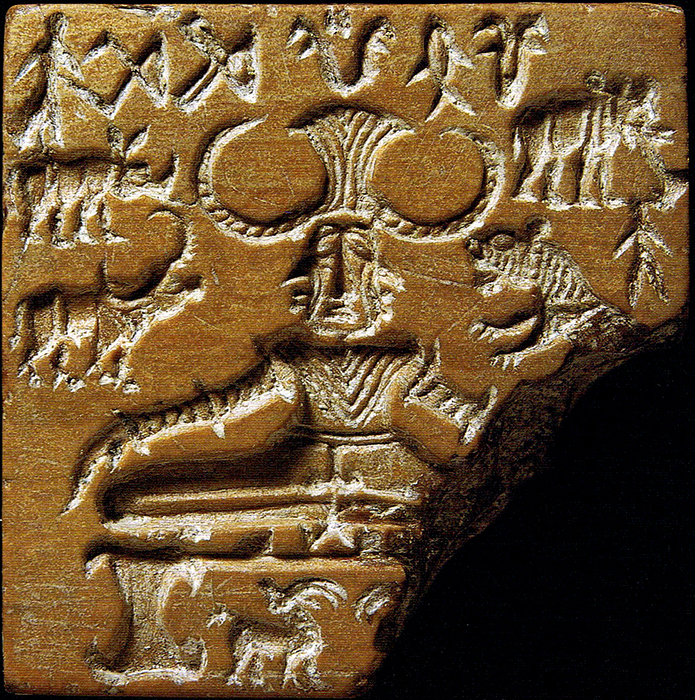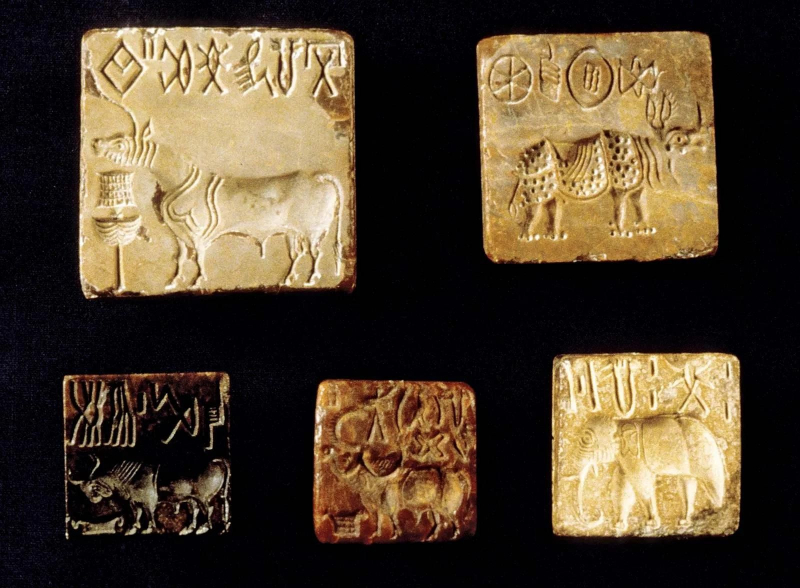Special material form and use
Seals impressions, pottery, bronze tools, stoneware bangles, bones, shells, ladles, ivory, and tiny tablets made of steatite, bronze, and copper have all been discovered to contain examples of Indus writing. The primary form of Indus Script is square stamp seals, which are typically an inch square (2.54 cm), with the script itself, displayed on top and an animal design in the center. There are examples of seals made of silver, faience, and calcite, although they are typically constructed of steatite. Some of them also include a layer of smooth material that has a glassy appearance. To reproduce the seals' image, clay or another flexible surface was used to press the seals.
Since the Indus Script has not yet been deciphered, its purpose cannot be determined with certainty, and all knowledge is dependent solely on archaeological data. Some of the seals may have served as talismans or amulets, but they also served as a useful means of identification. It is also thought that the Indus Script was employed as a management tool, given that writing in ancient times is typically connected with elites attempting to record and govern transactions. As evidence of how far things went in ancient times, there are also examples of this script being employed on clay tags affixed to bundles of products that were transferred between merchants. Some of these clay tags have been discovered in Mesopotamia, far from the Indus Valley.
The Indus Script was also employed in the context of "narrative imagery," which consisted of scenes from tales or stories that the script was coupled with pictures of real or imagined people, animals, or other beings in dynamic stances. This final application is comparable to the well-documented religious, liturgical, and literary uses in other writing systems.







